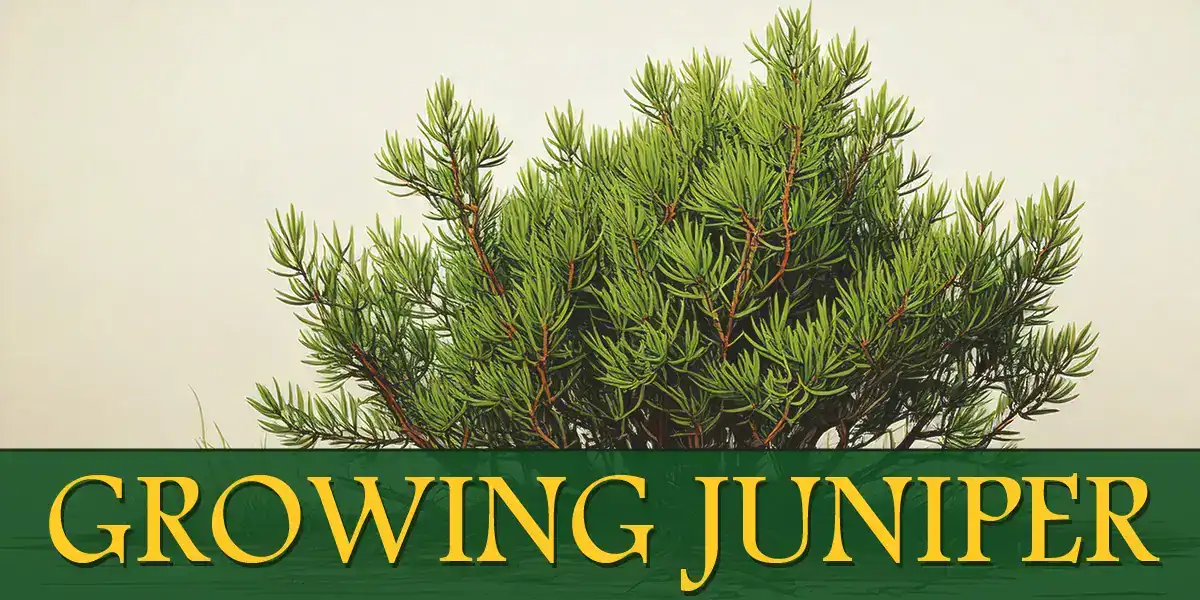What’s a Juniper, exactly?
It’s the evergreen plant that comes after Mayiper and just before Julyiper.
Dad jokes aside, this popular and versatile ornamental takes many forms — ground covers, shrubs, and trees.
The foliage can be shades of green, blue-green, or gold, adding texture and color contrast to a landscape. Ground cover varieties have dense, spreading roots that stabilize soil, making them ideal for slopes or banks.
The berries (technically seed cones) provide flavoring for gin and food for birds and small mammals, and the plant’s trimmings often find their way into decorative wreaths and natural crafts.
Origins & Lifespan
Junipers are native to North America, Europe, Asia, and parts of Africa. They thrive in various climates, from deserts to mountain slopes.
In the US, native junipers include Juniperus californica (California Juniper) and Juniperus occidentalis (Western Juniper).
Many junipers can live 50–150 years in the right conditions. Some wild species, like the Western Juniper, have been documented at over 1,000 years old.
Best Juniper Varieties for Southern California
Note: Junipers should be planted away from the house, since they can act like tinder in a fire.
The following picks do well in low-water, full-sun conditions.
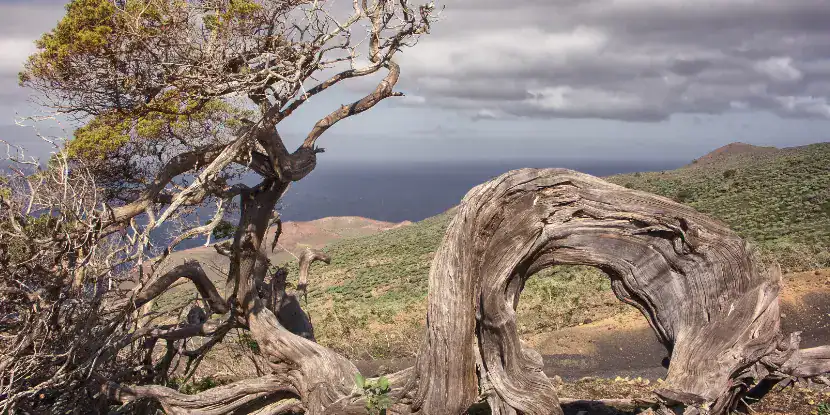
A gnarled old juniper tree in Spain.
Ground Cover Junipers
Juniperus horizontalis ‘Blue Rug’
- Height: 4–6 inches
- Spread: 6–8 feet
- Notes: Silvery-blue foliage, excellent for slope erosion control, extremely drought-tolerant.
Juniperus conferta ‘Blue Pacific’
- Height: 1–1.5 feet
- Spread: 6–8 feet
- Notes: Salt-tolerant, great for coastal gardens, soft texture.
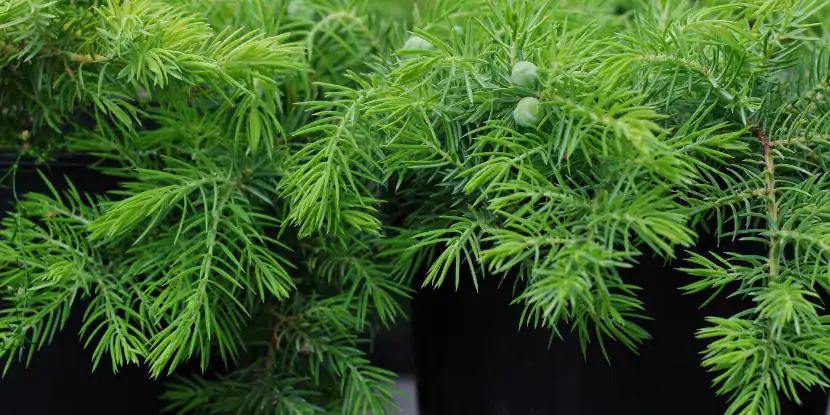
Juniperus conferta has a soft texture and grows well in coastal gardens.
Juniperus horizontalis ‘Wiltonii’ (also called Blue Carpet)
- Height: 6–8 inches
- Spread: 8–10 feet
- Notes: Dense coverage, vivid blue foliage.
Shrub Junipers
Juniperus chinensis ‘Sea Green’
- Height: 4–6 feet
- Spread: 6–8 feet
- Notes: Graceful arching branches, soft green foliage.
Juniperus chinensis ‘Kaizuka’ (Hollywood Juniper)
- Height: 15–20 feet
- Spread: 10–15 feet
- Notes: Twisting branches, sculptural form, very drought-tolerant.
Juniperus sabina ‘Tamariscifolia’ (Tam Juniper)
- Height: 2–3 feet
- Spread: 6–10 feet
- Notes: Soft texture, good for slopes.
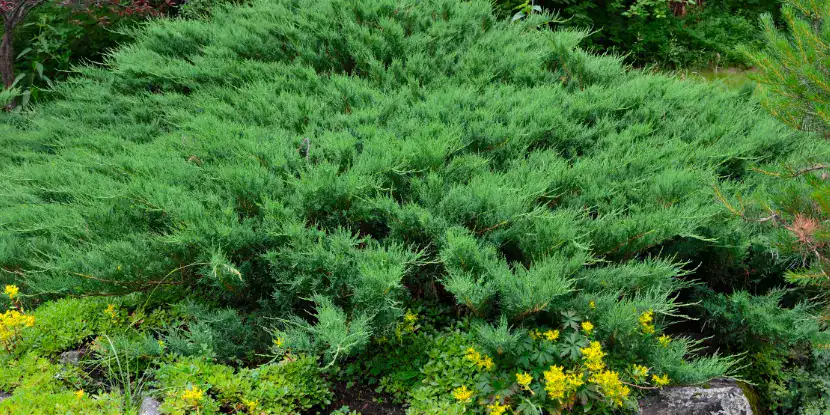
Juniperus sabina has soft foliage and is good for slopes.
Tree-Form Junipers
Juniperus scopulorum ‘Skyrocket’
- Height: 15–20 feet
- Spread: 2–3 feet
- Notes: Very narrow and upright, great for tight spaces.
Juniperus virginiana ‘Canaertii’
- Height: 20–35 feet
- Spread: 15–20 feet
- Notes: Dense, pyramidal shape with blue berries.
Juniperus chinensis ‘Torulosa’ (another name for Hollywood Juniper in tree form)
- Height: 15–20 feet
- Spread: 10–15 feet
- Notes: Iconic windswept look, heat and drought-resistant.
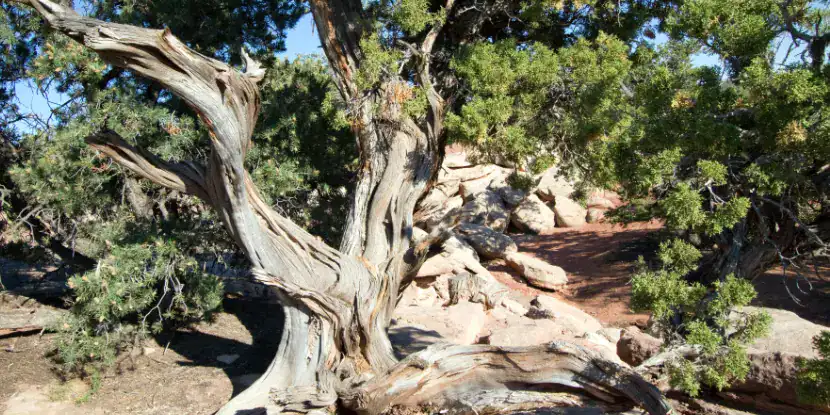
An old juniper in Canyonlands National Park in southern Utah.
Optimal Growing Conditions
Light Requirements
- Full sun (6+ hours daily) for most varieties
- Partial sun is acceptable for some ground cover types
- Avoid deep shade — reduces foliage density and color vibrancy
- Morning sun is essential for dew evaporation and disease prevention
Temperature Tolerance
- Heat-tolerant once established (ideal for Southern California summers)
- Cold hardy in USDA zones 3–9 (depending on variety)
- Withstands temperature fluctuations better than most evergreens
- No special winter protection needed in mild climates
Soil Preferences
- Well-draining soil is critical — soggy conditions cause root rot
- Tolerates poor, rocky, or sandy soils
- pH range: 6.0–7.5 (slightly acidic to neutral)
- Avoid heavy clay unless amended with sand or gravel for drainage
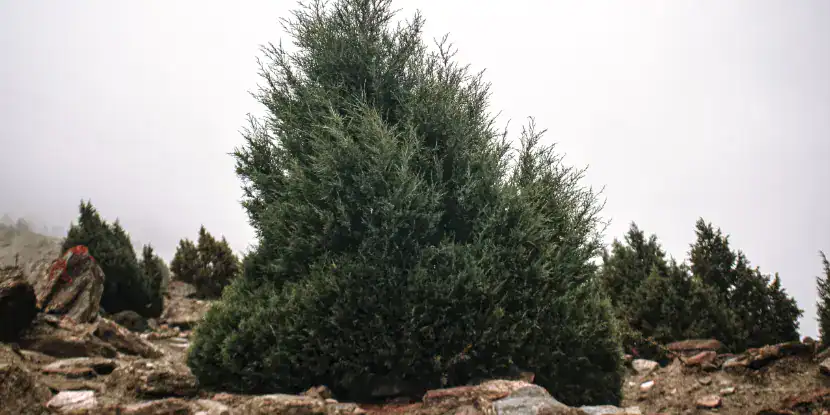
Junipers are tough plants that can grow in harsh conditions, as long as the soil drains well.
Propagating Juniper from Cuttings
Growing junipers from cuttings saves money and ensures you get the exact variety you want. Please get your cuttings from a friend — do not raid the local nursery with clippers in hand!
Best Timing
- Take cuttings in late fall or early winter
- Choose semi-hardwood growth (current year’s growth that’s begun to harden)
Cutting Selection
- Use healthy, disease-free branch tips
- Cut 4–6-inch sections with sharp, clean pruners
- Remove lower needles, leaving the top 2 inches of foliage
- Dip cut end in rooting hormone for faster establishment
Rooting Process
- Plant in well-draining potting mix (50% perlite, 50% peat moss works well)
- Keep soil consistently moist but not waterlogged
- Place in bright, indirect light
- Expect roots in 6–12 weeks
- Transplant to larger containers once roots are 2+ inches long
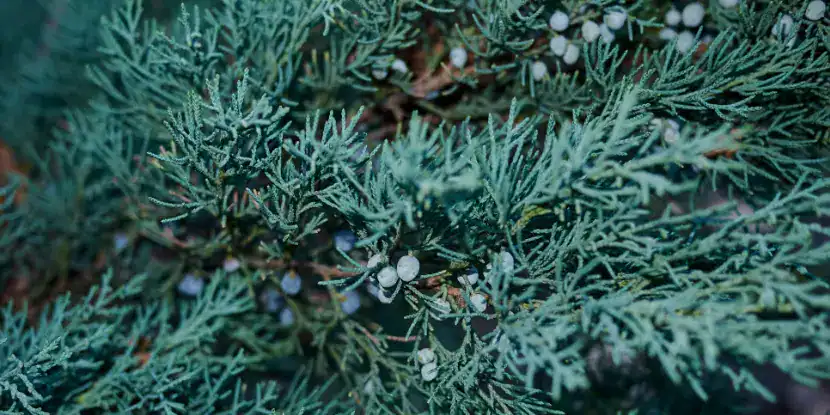
The blue-green foliage of Juniperus scopulorum.
Steps for Planting
Site Preparation
- Choose a location based on mature size requirements
- Test soil drainage by digging a hole and filling it with water — it should drain within 24 hours
- Amend clay soil with coarse sand or gravel if needed
Planting Process
- Dig a hole 2–3 times wider than the root ball, same depth
- Loosen the root ball gently if pot-bound
- Backfill with native soil (no amendments needed for most junipers)
- Water thoroughly after planting
- Apply a 2–3 inch layer of mulch, keeping it away from the trunk
Spacing Guidelines
- Ground cover varieties: 3–6 feet apart
- Shrub forms: 6–10 feet apart
- Tree forms: 10–20 feet apart (check mature width for specific variety)
Juniperus sabina has soft foliage and is good for slopes.
Juniper Plant Care
Watering
- First year: Water 2–3 times per week during the growing season
- Established plants: Water deeply once a month during dry periods
- Reduce watering in the fall to help plants prepare for winter
- Avoid overhead watering to prevent fungal diseases
Fertilizing
- Minimal fertilizer needs — over-fertilizing reduces hardiness
- Apply balanced, slow-release fertilizer in early spring if desired
- Compost around the base provides gentle nutrient release
- Skip fertilizing in late summer to avoid tender growth before winter
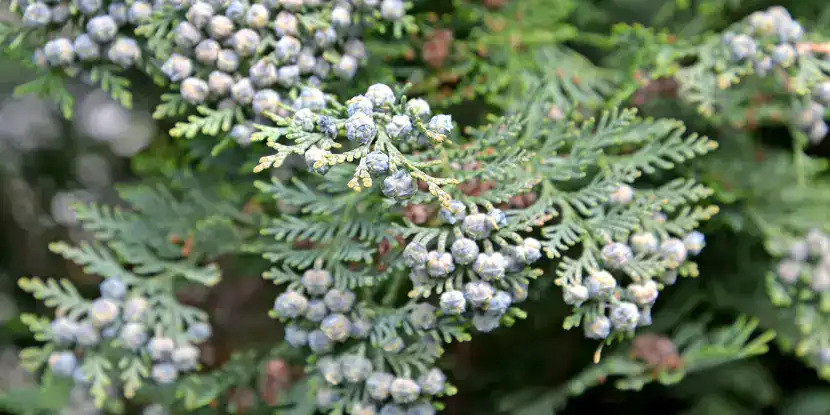
Birds and small mammals will thank you for the berries juniper provides.
Common Pests & Diseases
Pests
- Spider mites (cause yellowing, stippled foliage)
- Scale insects (small, waxy bumps on branches)
- Bagworms (cone-shaped bags hanging from branches)
Pest Prevention
- Keep trees healthy and well-watered to prevent infestations
- Use insecticidal soap or horticultural oil for small pest populations
- Prune heavily infested branches and dispose of them properly
Diseases
- Powdery mildew (white, powdery fungal growth on leaves)
- Anthracnose (dark, sunken spots on leaves and twigs)
Disease Prevention
- Avoid overhead watering to reduce humidity and moisture on foliage
- Prune affected branches and dispose of them properly
- Apply fungicides as directed by a professional, if necessary
Pruning
- Most varieties need minimal pruning in late winter or early spring
- Remove dead, damaged, or crossing branches
- Shape lightly. Avoid heavy pruning as junipers don’t regenerate from old wood
- For ground covers, trim edges to maintain boundaries
FAQs: Growing Juniper
Q: How fast do junipers grow?
Growth rates vary by type. Ground covers spread 6–12 inches annually. Shrub forms grow 6–12 inches in height per year. Tree forms can grow 12–24 inches yearly when young, slowing with age.
Q: Can junipers survive drought?
Yes, once established (usually after 2–3 years), most junipers are extremely drought-tolerant. They’re excellent choices for water-wise Southern California gardens.
Q: Are junipers deer resistant?
Most junipers are deer-resistant due to their prickly foliage and strong scent. However, hungry deer may browse them during severe drought or winter when other food is scarce.
Q: Do junipers need winter protection?
In Southern California’s mild climate, winter protection isn’t necessary. Wrapping or windscreen protection may help young plants survive their first winter in colder regions.
Q: Why is my juniper turning brown?
Brown foliage usually indicates stress from overwatering, underwatering, poor drainage, or disease. Check soil moisture and drainage first. Remove affected branches and improve growing conditions.
Q: Can I grow junipers in containers?
Yes, many dwarf and compact varieties work well in large containers. Use well-draining potting mix and ensure containers have drainage holes. Container plants need more frequent watering.
Q: When should I transplant a juniper?
Early spring or fall is best for transplanting. Young plants (under 5 years) transplant more successfully than mature specimens. Prepare the new site before digging up the plant.
Q: Are juniper berries edible?
Juniper berries (actually seed cones) from certain species are used to flavor gin and in cooking, but proper identification is crucial. Many ornamental varieties produce berries that aren’t palatable or safe for consumption.

